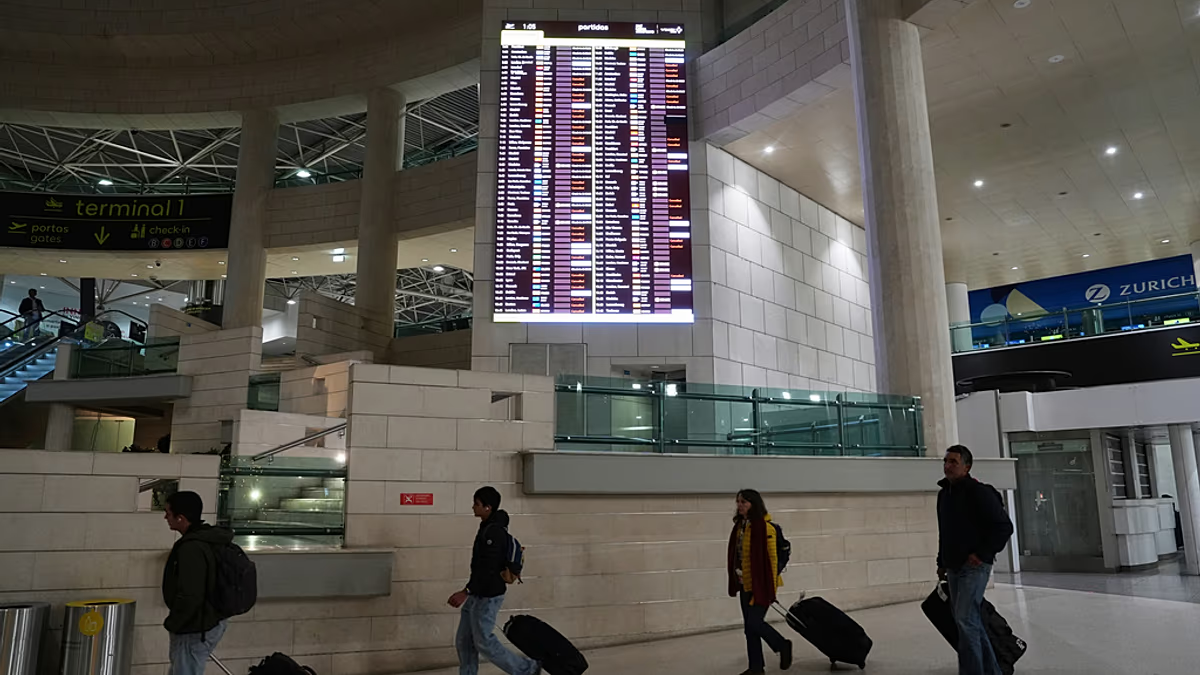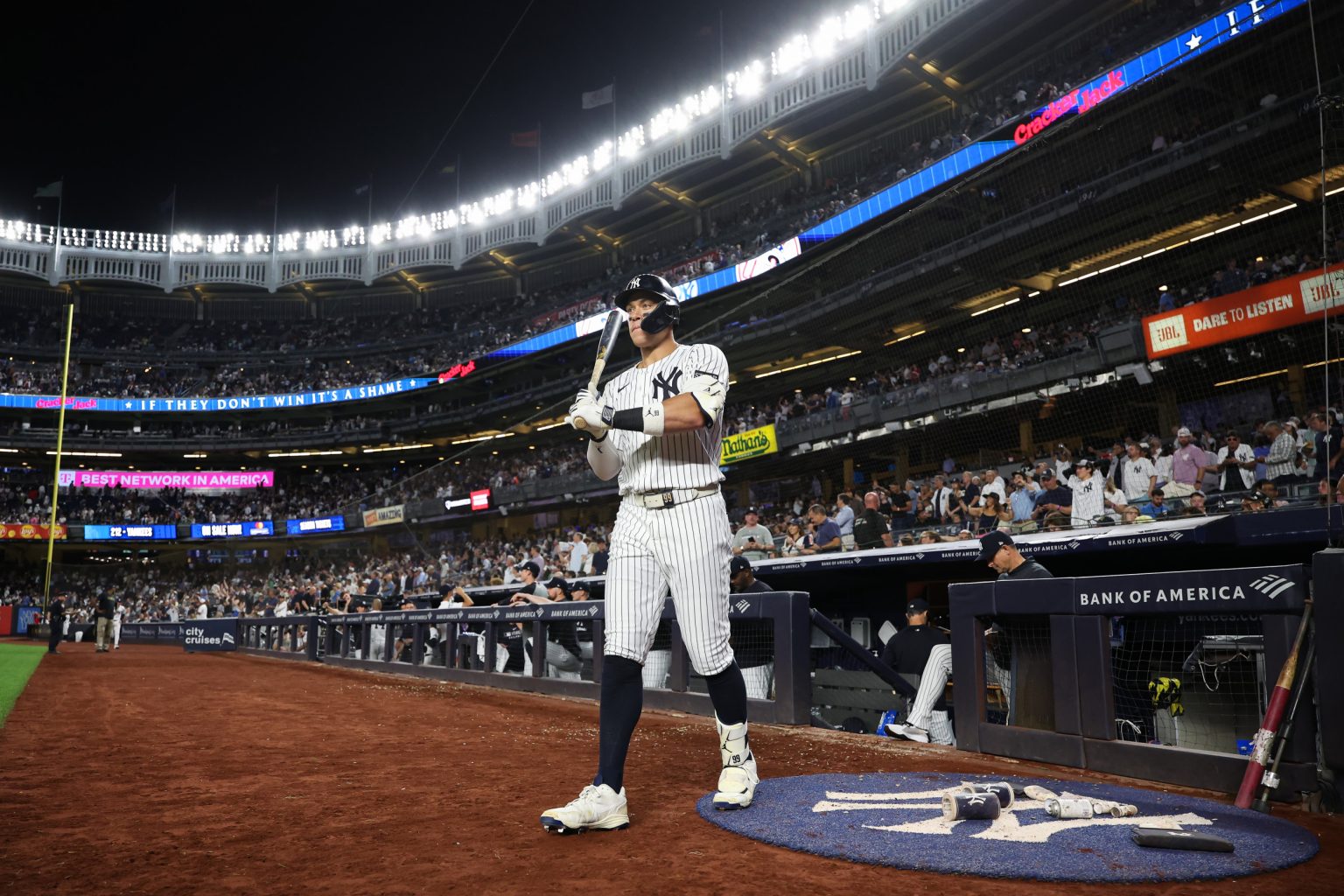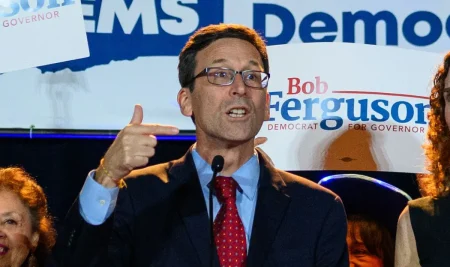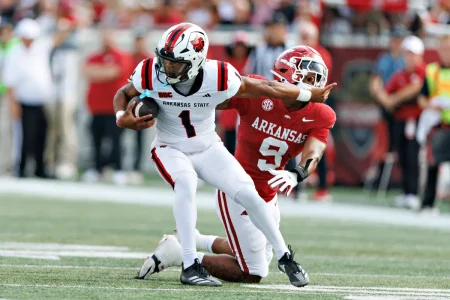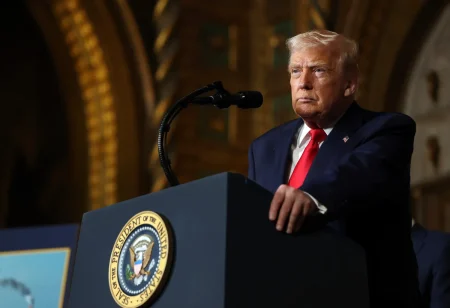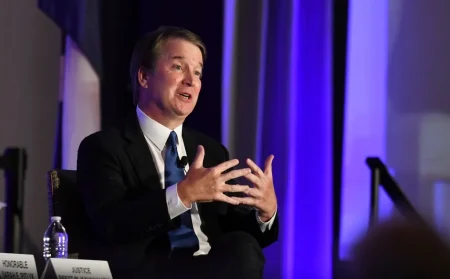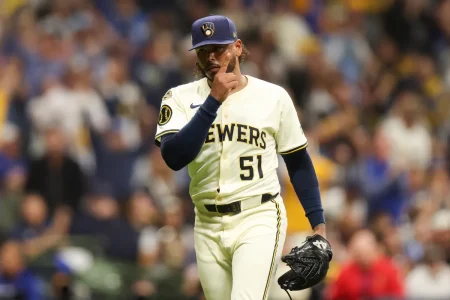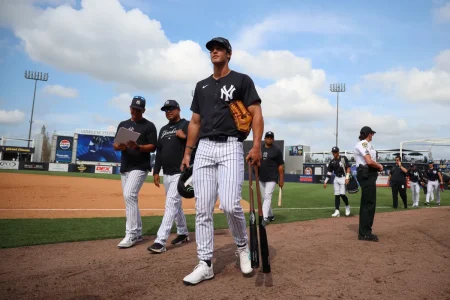Aaron Judge’s Recovery Journey: A Delicate Balance for the Yankees
The New York Yankees find themselves navigating a delicate situation with their superstar slugger Aaron Judge, who has been limited to designated hitter duties since his return from the injured list on August 5th. Dealing with a right flexor strain, Judge has been able to contribute at the plate but hasn’t patrolled his usual position in right field during this 19-game stretch. This adjustment to the lineup has created both challenges and opportunities for the Yankees as they position themselves for a playoff push in the final weeks of the season. The situation highlights the careful balance teams must strike between utilizing their star players while ensuring their long-term health and availability for crucial moments.
Since returning to action, Judge’s offensive production has been uncharacteristically subdued with a slash line of .200/.373/.385 – numbers that fall well below his typical elite standards. While it might be tempting to draw a connection between his injury and these hitting struggles, Yankees manager Aaron Boone has expressed confidence that Judge’s performance is simply experiencing a temporary dip rather than being affected by his physical condition. “That’s probably been a tick off,” Boone explained to the New York Daily News, “But that’s constantly something as hitters that you’re kind of working through. We know with Aaron that that’s a matter of time.” This perspective reveals the organization’s faith in Judge’s abilities and their understanding of the natural ebbs and flows that even the game’s best hitters experience throughout a long season. There’s a shared belief within the clubhouse that Judge’s offensive production will return to its exceptional level as he continues to accumulate at-bats.
The ripple effect of Judge’s temporary limitation extends beyond his personal performance, reshaping the Yankees’ defensive alignment and lineup construction. With Judge occupying the designated hitter role, Giancarlo Stanton has been pressed into right field duties – a solution that comes with its own complications given Stanton’s history of injuries and the organization’s careful management of his playing time. The situation highlights how interdependent a baseball roster becomes, particularly when key players face restrictions. Boone has indicated that Judge might receive an upcoming off day, during which Stanton could slide into the DH role, further illustrating the puzzle pieces managers must arrange when working with players on modified schedules. This constant adjustment becomes increasingly important as teams head toward the postseason, when maximizing lineup potential while maintaining player health becomes even more critical.
Looking forward, the Yankees face strategic questions about balancing immediate needs with long-term goals. The organization has deliberately avoided establishing a concrete timeline for Judge’s return to outfield duties, prioritizing his complete recovery over rushed deployment. “Boone also said he still doesn’t have a target date for Judge’s in-game return to the outfield,” reported Phillips, indicating the patient approach being taken with the franchise cornerstone. This cautious strategy reflects the broader philosophy many teams adopt with their most valuable players – understanding that rushing a recovery process could potentially compromise availability during the most crucial games in October. The Yankees recognize that their championship aspirations likely depend on having Judge at full strength when the stakes are highest, even if that means temporary lineup limitations in the regular season.
The situation with Judge exemplifies the modern approach to player management, where organizations increasingly rely on medical expertise and data to make decisions about player availability and usage. Gone are the days when players were expected to simply “play through” injuries without consideration for long-term consequences. Today’s approach acknowledges that strategic rest and careful rehabilitation often lead to better outcomes, both for individual players and for teams as collective units. The Yankees’ handling of Judge demonstrates this evolution in thinking – recognizing that maximizing his contributions over the full season and postseason requires thoughtful management rather than pushing for immediate returns that might compromise future availability. This patient approach might frustrate fans eager to see the complete Yankees lineup in action, but it represents the calculated decision-making that characterizes successful modern franchises.
When Judge eventually returns to his customary position in right field, the Yankees will gain significant flexibility that could power their offense through the final stretch of the regular season and into the playoffs. Having both Judge and Stanton in the lineup consistently provides the Yankees with a formidable heart of the order that few pitching staffs can navigate with confidence. The anticipation of this fully operational lineup gives Yankees fans reason for optimism despite Judge’s current limitations. The organization’s patience could ultimately prove rewarding if it results in a healthy, productive Judge during the games that matter most. As baseball history has repeatedly shown, championship teams often benefit from having their stars at peak performance when the pressure intensifies in October – something the Yankees clearly understand as they carefully manage Judge’s return to full duties.
